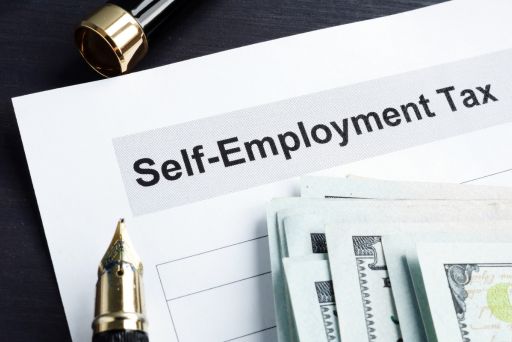As small business accountants, we hear the question “how much should I put aside for self-employment taxes?” and other similar questions quite often. Although the answer really is “it depends”, we know that doesn’t help much in helping you get your books in order and make sure you’ve got enough come tax time. Today, we’re going to cover the basics of self-employment tax so you’ve got a handle on what it is and how it works, as you continue to grow your business.
What is Self-Employment Tax & Does It Apply to Me?

The self-employment tax is a combination of Social Security and Medicare taxes. If you’ve ever worked as an employee for a company, your pay stub should have reflected a certain dollar amount that was being withheld from your paycheck. The amount withheld is matched by your employer and then given to the government to cover the Social Security and Medicare taxes.
If you’ve decided to jump into the world of entrepreneurship or run a profitable business of any kind, you’re likely to become liable for self-employment tax. The self-employment tax rate is 15.3% – which is a combination of 12.4% for social security (old-age, survivors, and disability insurance) and 2.9% Medicare (hospital insurance).
So when does Self-Employment Tax kick in for your side hustle? Generally, if you have net earnings from your business of $400 or more, you’re required to file an income tax return and pay self-employment taxes. The good news is that paying self-employment taxes is easy – it’s actually reported as part of your annual individual tax return.

How is Self-Employment Tax Calculated
Your tax professional or tax software should guide you through the process of filing self-employment taxes, but it’s always nice to know some of the details of how it works.
When you file your taxes your self-employment tax is calculated based on your net profit (business income – business expenses). All of your business’ net income is subject to the Medicare portion of the tax, but only the first $127,200 is subject to the Social Security portion. When it comes to self-employment tax, you pay twice the tax rate because you’re covering both sides of the tax (the individual portion as well as the employer’s matched portion). It’s because of this, that the government gives you a tax deduction for half of the self-employment tax you owe, reducing your taxable income overall.
How do I estimate my Self-Employment Tax so I Have Enough to Cover My Taxes Come Tax Time?
You could probably make a pretty good guess if you’ve made it this far, but we’ll break it down into a simple formula.
First you’ll need to find out what your net profit is. To do that use the following formula:
Net Profit = Total Income – Deductible Expenses
If you’ve got fancy accounting software or have hired a professional, you can check your Profit and Loss Sheet (P&L) and be able to find this number as well.
Now the amount of taxes you actually pay overall is determined by our tax bracket – and that’s determined by the amount you earn. (This is why we answer questions with “it depends”).
Our rule of thumb is to set 25% of your net profit aside for taxes (this recommendation holds true for LLC, sole-proprietor and s-corp businesses). You may end up owing a little more or a little less, but you’ll be sitting easy at tax time and that’s what counts.
Want to hear all this from one of our expert accountants and founders of Vyde? He covered this and many other common tax questions for small businesses in a recent webinar.



